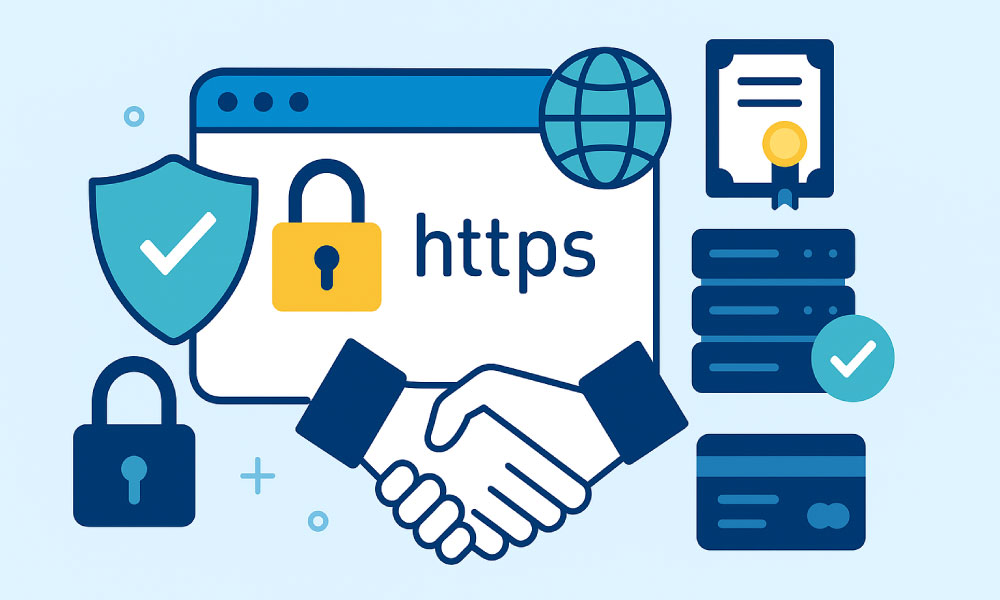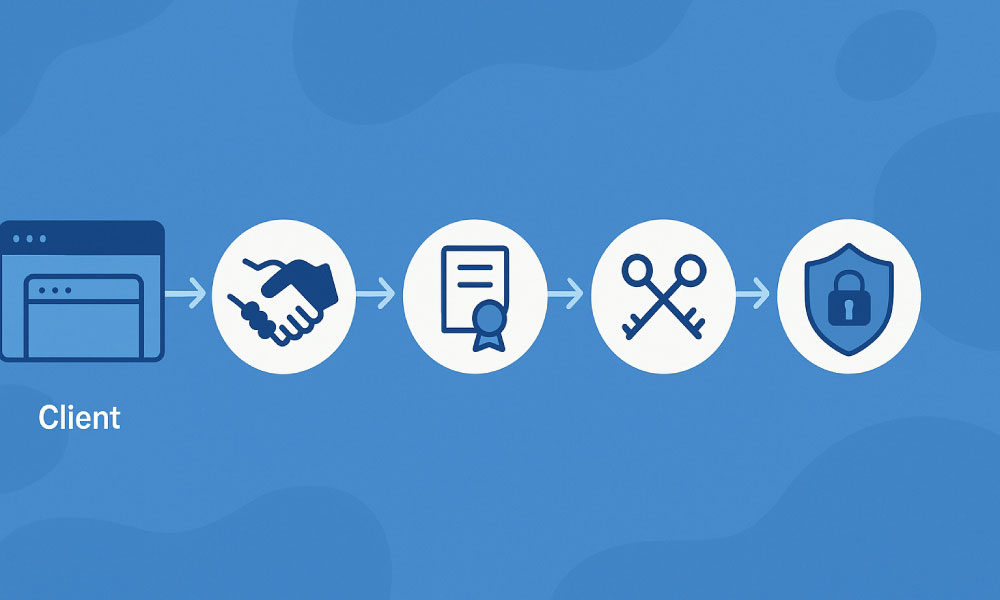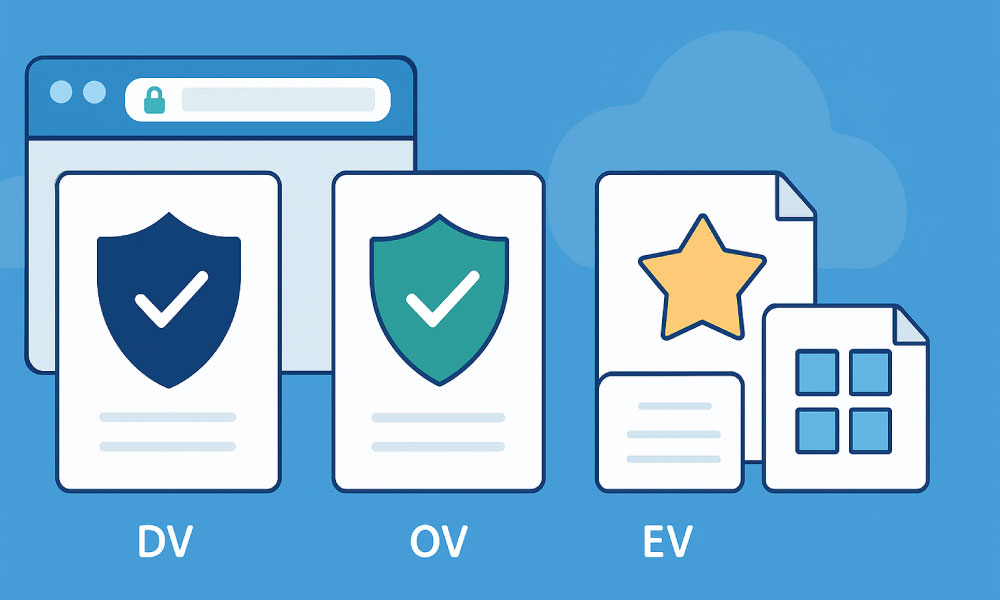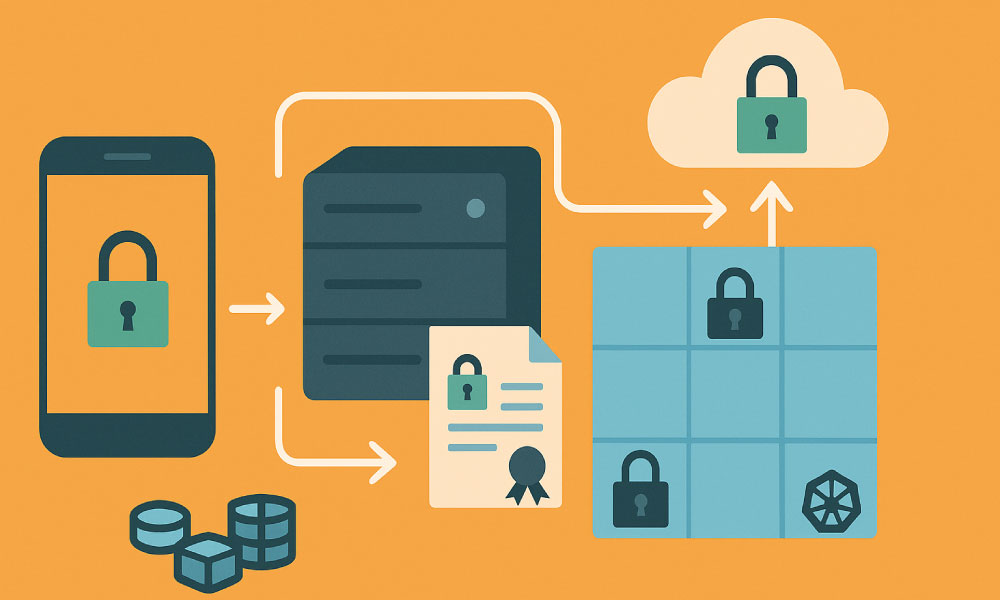How SSL Certificates Actually Protect Your Business


What SSL/TLS Actually Does
- Encryption (Confidentiality)
Data exchanged between a visitor’s browser/app and your server is encrypted, so eavesdroppers can’t read login credentials, payment data, personal details, or session cookies. - Authentication (Identity Proof)
A valid certificate ties your domain to a public/private key pair and—depending on the validation level—proves you’re the legitimate entity that owns that domain. This helps block phishing and man-in-the-middle attacks that rely on spoofed websites. - Integrity (Tamper Protection)
TLS uses message authentication codes to ensure that content (pages, scripts, downloads) isn’t altered in transit. This mitigates malicious script injection and adware that can hijack user sessions.
Together, these protections decrease account takeover, form-skimming, and checkout abandonment—and increase trust signals that drive conversion.

How the TLS Handshake Works
- Client Hello: The browser says, “Here are the TLS versions and ciphers I support.”
- Server Hello: Your server picks the strongest mutual options and sends its certificate.
- Certificate Verification: The browser checks if a trusted Certificate Authority (CA) issued the cert, whether the domain matches, and whether it’s expired or revoked.
- Key Exchange: The parties securely agree on a session key (often via ECDHE) used to encrypt the session.
- Secure Session: All subsequent traffic is encrypted and integrity-checked.
This happens in milliseconds, but the result is a private, authenticated channel.

Types of SSL Certificates
- DV (Domain Validated):
Verifies control of the domain. Fast, inexpensive, suitable for blogs, landing pages, and internal tools where organizational identity is less critical. - OV (Organization Validated):
Confirms the legal entity behind the domain. Good for SMBs and B2B sites where customers expect to transact or submit data. - EV (Extended Validation):
The most rigorous identity checks. Recommended for financial services, healthcare, marketplaces, and high-risk industries where brand impersonation would be costly. - Wildcard Certificates:
Protect a domain and all first-level subdomains (e.g., *.example.com). Useful for multi-team environments with many subdomains. - Multi-Domain/SAN Certificates:
Protect multiple hostnames (e.g., example.com, app.example.com, example.co.uk) under a single cert.

Business Benefits Beyond Security
- Higher Conversion & Lower Cart Abandonment:
Modern shoppers are trained to distrust “Not Secure” warnings. The padlock and https:// reduce perceived risk at checkout and login screens. - SEO Lift:
Search engines preference secure sites. While not the only factor, HTTPS is a ranking signal and helps with Core Web Vitals (via HTTP/2/3 that often ride over TLS). - Brand Protection:
Valid, higher-assurance certificates make it harder for attackers to impersonate your domain successfully, and they add friction to phishing campaigns. - Compliance Alignment:
Frameworks such as PCI DSS require strong encryption in transit for payment data. TLS is table stakes for most audits and vendor reviews. (This is not legal advice—always consult your compliance team.)

What SSL Does Not Do
- “SSL makes my site trustworthy by itself.”
It secures the connection; it doesn’t guarantee your content or business practices are trustworthy. Pair TLS with honest policies and secure coding. - “Any padlock means the business is legitimate.”
DV certs prove domain control, not business identity. For high-risk use cases, consider OV or EV. - “Once installed, I’m done.”
Certificates expire. Cipher suites evolve. You need monitoring, automation, and periodic reviews.

Correct SSL Implementation: A Quick Checklist
- Inventory Your Domains & Subdomains
Map everything public-facing: www, app, api, blog, regionals, marketing microsites, and third-party hosted subdomains (e.g., status.example.com). - Choose Certificate Type & CA
Decide DV/OV/EV and wildcard vs. SAN. Use a reputable CA and consolidate where possible to reduce management overhead. - Generate Keys Securely
Use strong key sizes (e.g., 2048-bit RSA or ECDSA with P-256). Protect private keys with strict access controls and hardware security modules (HSM) when feasible. - Install & Chain Properly
Configure the full certificate chain (server + intermediates). Missing intermediates cause browser trust errors. - HSTS & Redirects
Redirect all HTTP to HTTPS. Enable HTTP Strict Transport Security (HSTS) with preload (after testing) to force future secure connections. - Modern Protocols & Ciphers
Prefer TLS 1.2/1.3, disable outdated protocols (SSLv3, TLS 1.0/1.1). Use forward secrecy ciphers (ECDHE). Turn on OCSP stapling. - Session Security
Mark cookies Secure and HttpOnly; consider SameSite=Lax/Strict as appropriate. Rotate session secrets. - Automate Renewals
Use ACME (e.g., Let’s Encrypt) or CA APIs so certs auto-renew. Add monitoring and alerts for expiry and misconfiguration. - Test & Monitor
Run regular scans (e.g., SSL Labs style checks) and monitor for mixed content, certificate transparency logs (to detect rogue certs), and TLS errors.

Performance Considerations
- HTTP/2 or HTTP/3 (QUIC) for multiplexing and latency improvements.
- Session resumption and 0-RTT (carefully) for faster repeat visits.
- CDN offload to terminate TLS close to users and cache static assets.
Result: a faster, more secure experience that’s aligned with Core Web Vitals.

SSL for Apps, APIs, and Microservices
- APIs (api.example.com) with proper authentication and rate limiting.
- Internal service-to-service traffic (mTLS) in zero-trust architectures.
- Mobile apps using certificate pinning to prevent on-path tampering.
- Email and messaging (STARTTLS, TLS for webhooks) to protect machine-to-machine flows.
Result: a faster, more secure experience that’s aligned with Core Web Vitals.

The Bottom Line
SSL/TLS is more than a padlock—it’s a business control that protects revenue, brand reputation, and customer trust. By encrypting data, proving identity, and preserving integrity, SSL cuts fraud, lifts conversions, and satisfies compliance reviewers. Implement it thoroughly (across sites, apps, and APIs), automate renewals, and monitor continuously. Do that, and you turn a technical checkbox into a competitive advantage.
